Overproofed Dough: How To Avoid a Sunken Loaf in a Bread Machine
Sneak Preview: Overproofed dough is a common problem for bread machine users and is usually the root cause of a sunken loaf. Learn what it is, what causes it, and how to save overproofed bread dough.
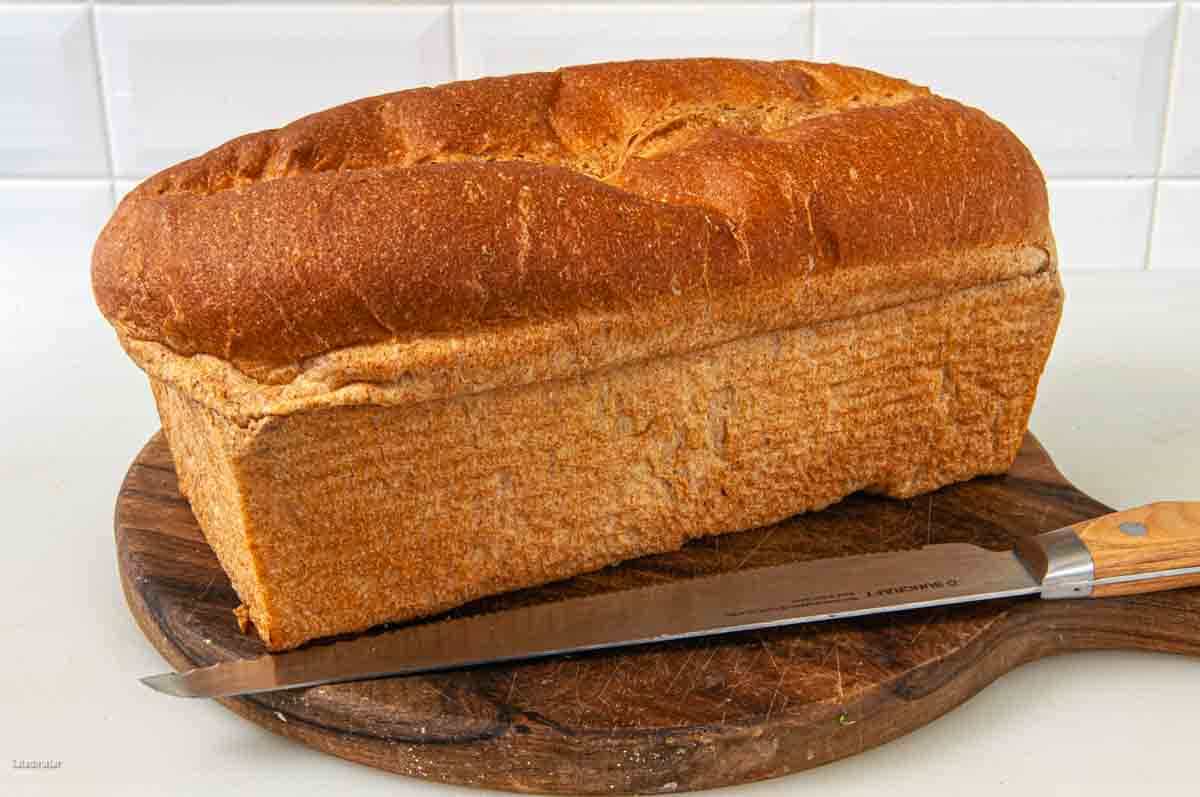
As an Amazon Associate, I earn from qualifying purchases.
As a new bread machine user, I never considered the possibility that my bread could overproof. Instead, I naively hoped and expected perfection with the push of a button.
After making a few loaves of bread, I realized what I should have known. A bread machine(paid link) has no brain, eyes, or fingertips.
Instead, it has a computer–a limited one at that. Nothing replaces human experience when it comes to dough that is negatively affected by the weather or human error.
Hopefully, this post will give you confidence. Take control when your bread maker needs help, or you’ve messed up. Let’s troubleshoot a bread machine problem many users fail to recognize.
I’ve been getting many questions about breadmaker recipes that used to turn out perfectly. Now that it’s summertime, they don’t. This is my answer.
Happy Bakers Speak Up
“Really helpful explanation of what to look for when troubleshooting breadmachine dough. Thank you!” — ERIC
First up? A definition.
What Is Overproofed Dough?
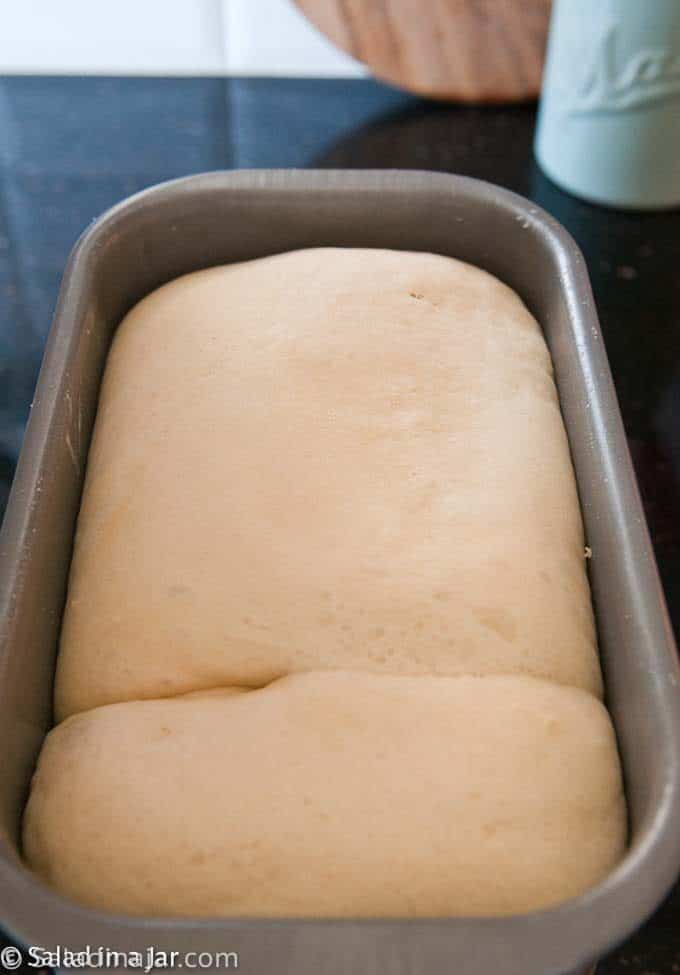
Overproofed dough was allowed to rise or proof too long. When using a bread maker, this usually happens during the first rise after the kneading phase ends. However, it can also occur with shaped dough during the second rise.
Paying attention to your dough is crucial. Environmental conditions play a major role and must be acknowledged in the bread-making process.
What Is Occurring When Dough Overproofs?
I’m no food scientist, so this will be a simple explanation:
Yeast is a live organism that feasts on the ingredients in the dough. As it eats, it burps out carbon dioxide. The carbon dioxide puffs out the tiny cavities of the gluten network, much like water fills a bunch of water balloons.

When the yeasty beasties run out of food, they quit burping, and the party is over. The balloons deflate or pop.
It’s our job to pace these little guys so they don’t overdo it. Ideally, the yeast won’t run out of food until the oven can lock the crumb into place. If they exhaust themselves, the balloons deflate, and the party ends. Your dough will lose volume and be crumbly–not good for sandwiches.
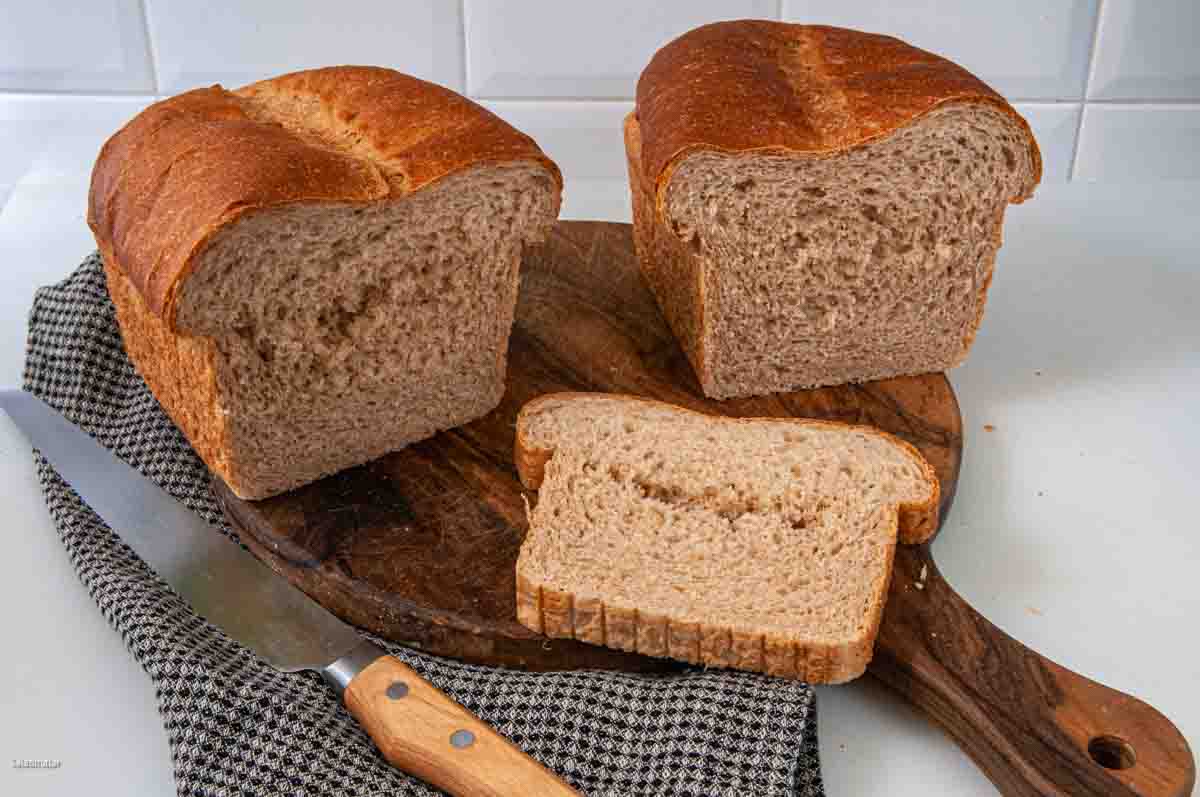
What Causes Overproofed Dough?
Any one of these reasons can give your dough fast-rising power.
- The dough was too wet.
- Too much yeast
- The humidity is unusually high.
- The ambient temperature is unusually warm.
- The dough ingredients are warmer than normal.
- Ingredient substitutions can accelerate the rate of proofing.
- The salt was omitted or greatly reduced.
- The bread machine sits in a drafty location.
- When using the DOUGH cycle, the dough was left in the machine too long after the cycle finished.
- An altitude above 5000 feet
- The machine was hit, dropped, or jolted.
Why Does This Matter to Bread Machine Users?
Bread machine users usually don’t think about proofing time because the machine has been preprogrammed. Unfortunately, it’s impossible to program for all the possible variables.
Look back to the previous list of reasons for overproofed dough. Is there any way to notify your machine that you’re in the heatwave of the century? Or that it’s been raining every day for the last two weeks? You must step into the process if you want fabulous bread every time.
How Can I Tell When the Dough Is Overproofed?
With experience, you can tell by looking. The dough will start to become translucent. (See the first picture in this post.) The dough will generally be more than double the original size. The two-finger test can be helpful for beginners.
How to do the two-finger or poke test for proofing:
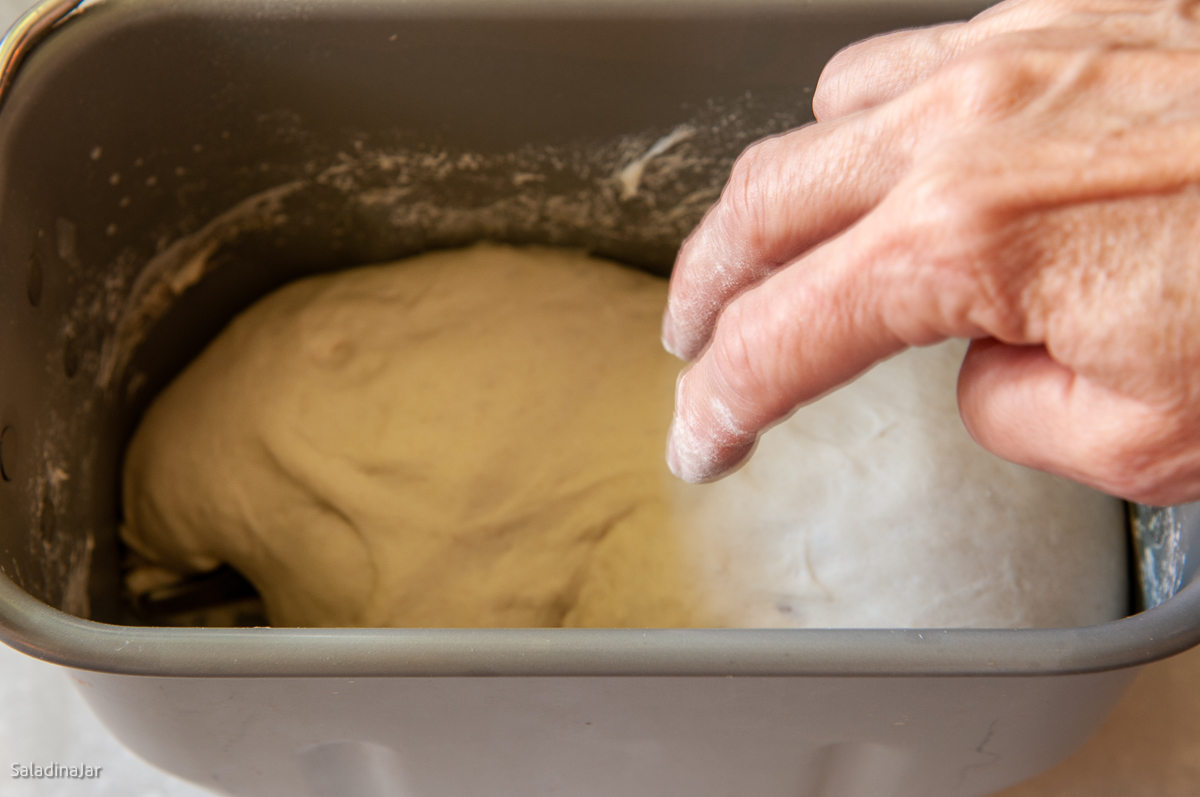
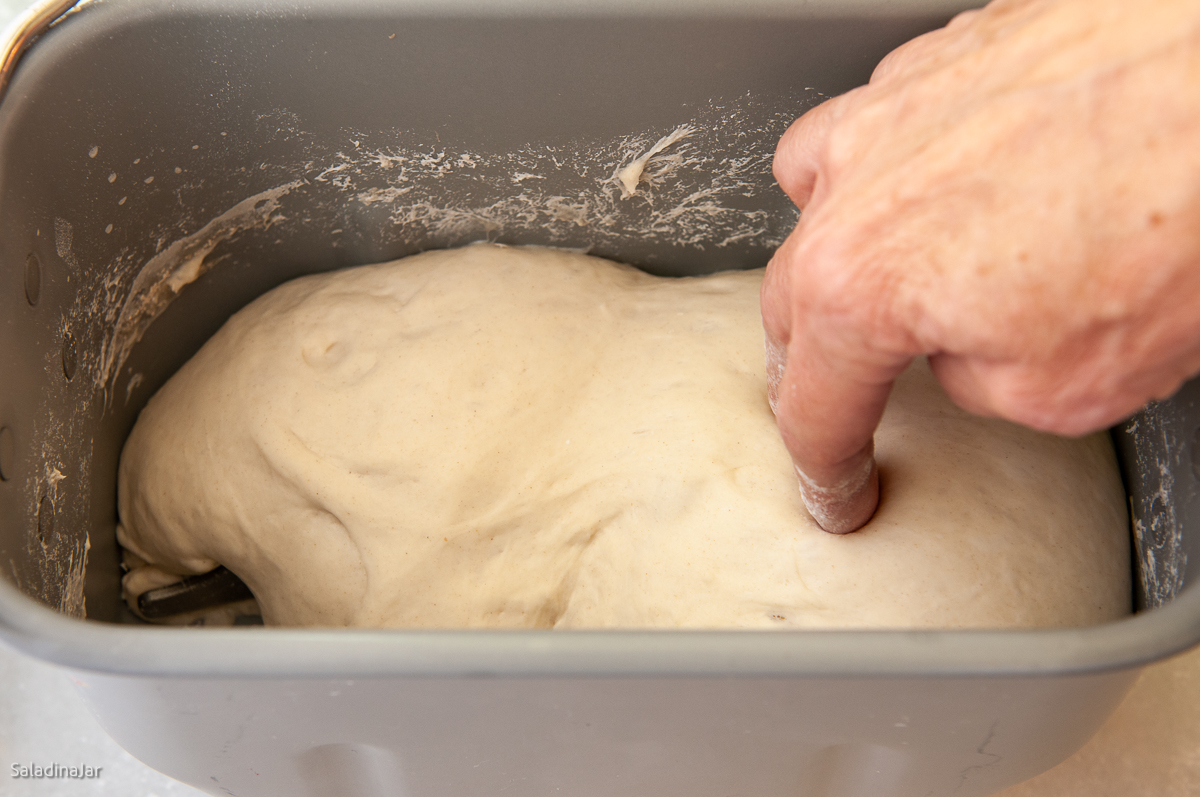
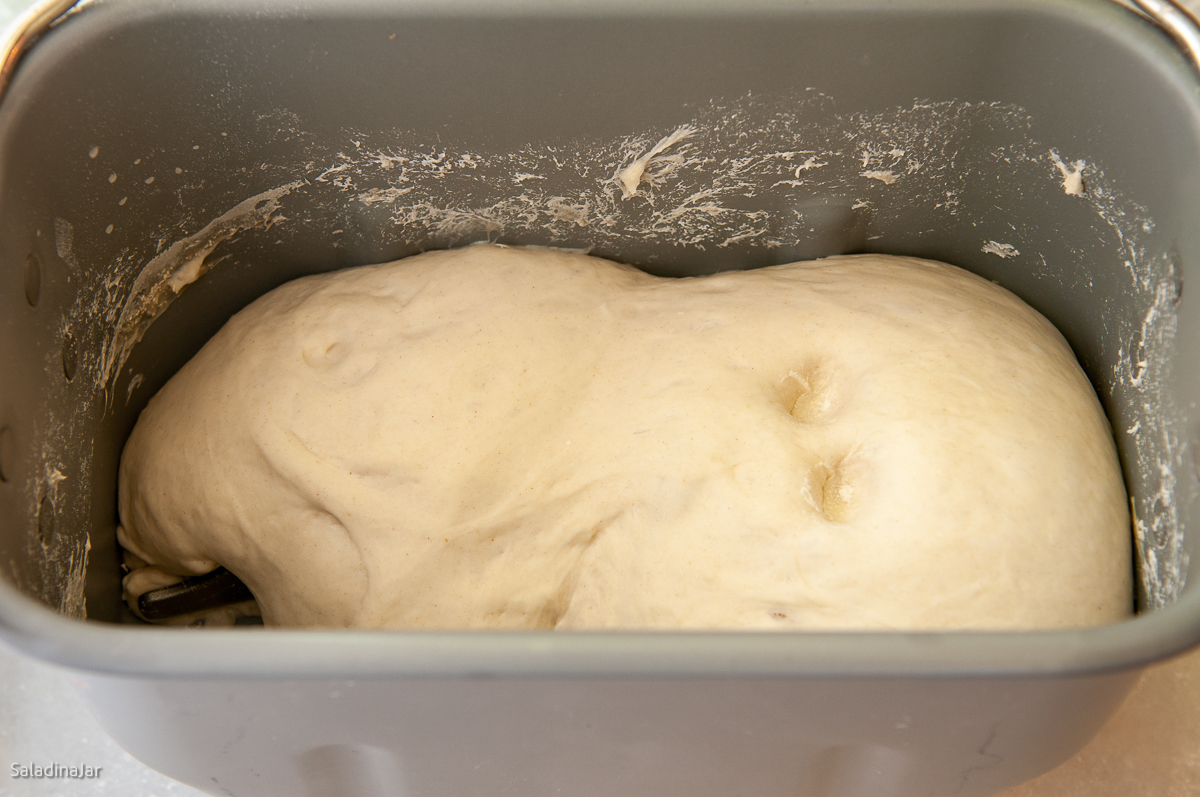
This particular finger test was done at the end of the DOUGH cycle. It appears the bread was already over-proofed. It’s summertime, and my kitchen is warm.
Imagine if you were using your machine to bake this bread. Even though the dough is overproofed, your machine will carry on as if everything is hunky-dory. This can cause the bread to rise high, then fall when the yeast runs out of food too soon.
Let’s revisit the same dough 30 minutes after the DOUGH cycle ends. Suppose we forgot to take the dough out of the machine. (I’ve done it many times.)
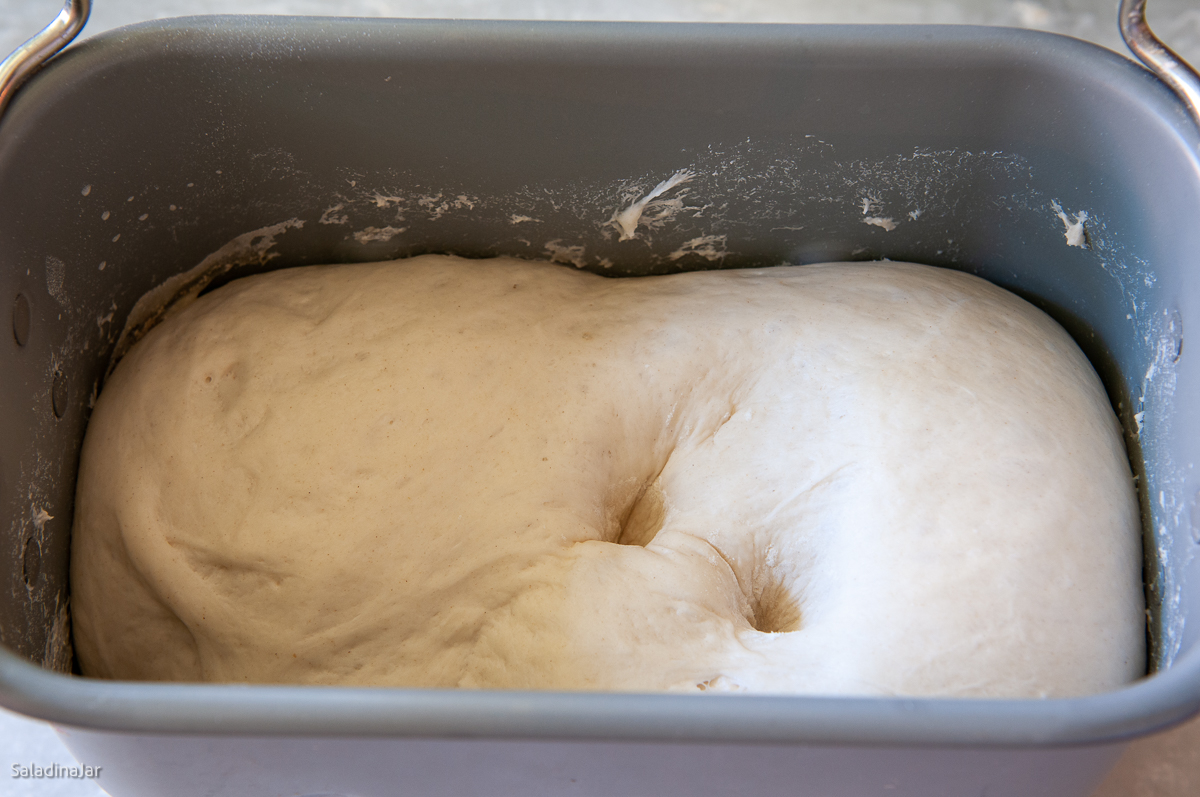
As you can see, the dough continues to rise, and the holes are even more distinct. This dough is definitely overproofed.
Can I Fix Overproofed Dough?
Yes, to some extent. Remove the dough from the bread machine pan onto a lightly floured surface. Gently deflate or push the dough down.
Reshape the dough into a ball. Let it rise again.
Check the dough after 20 minutes because each successive rise goes quicker. As soon as the dough is ready, shape it. Let the dough rise again, but stop it short of doubling in size this time.
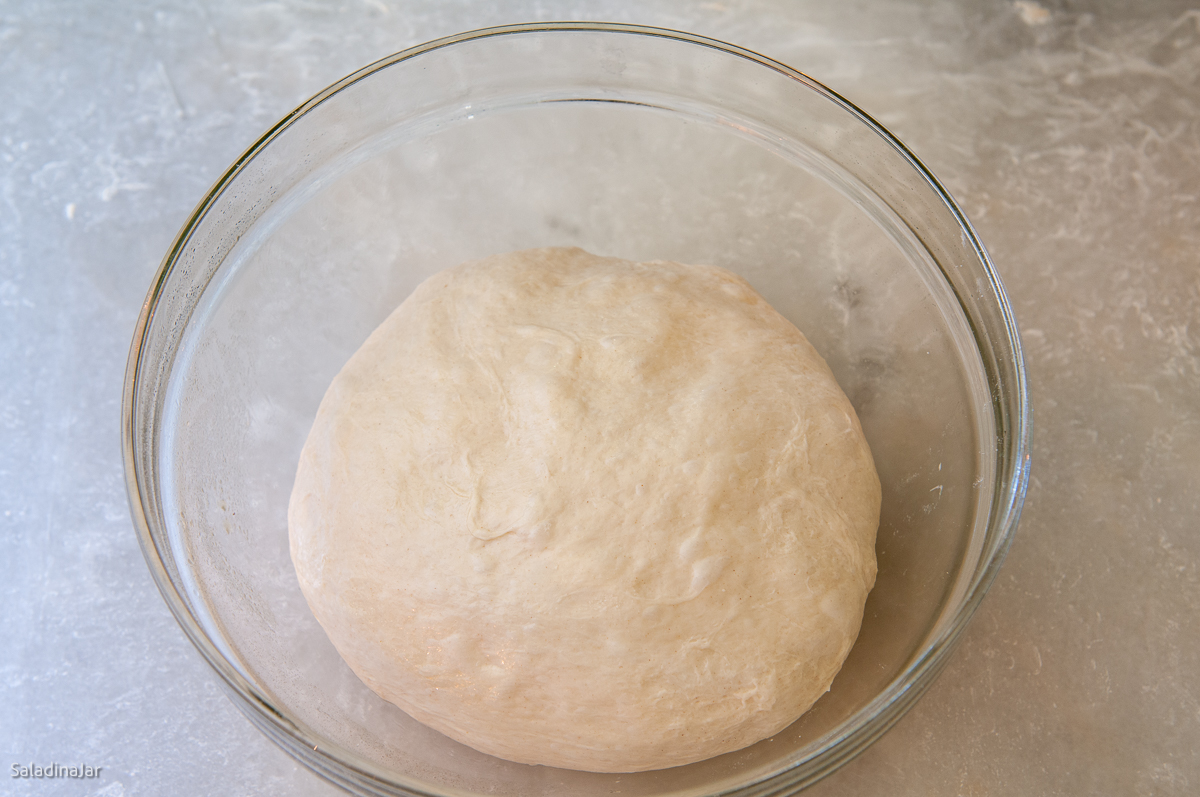
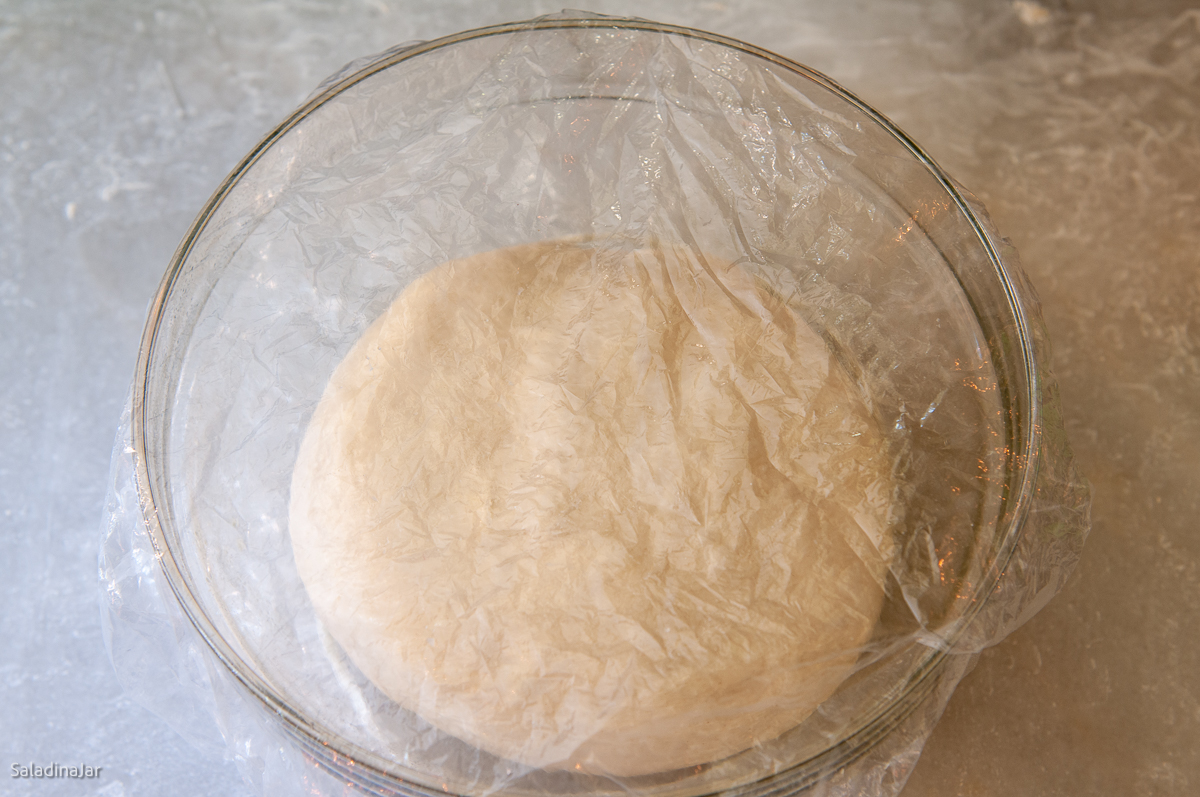
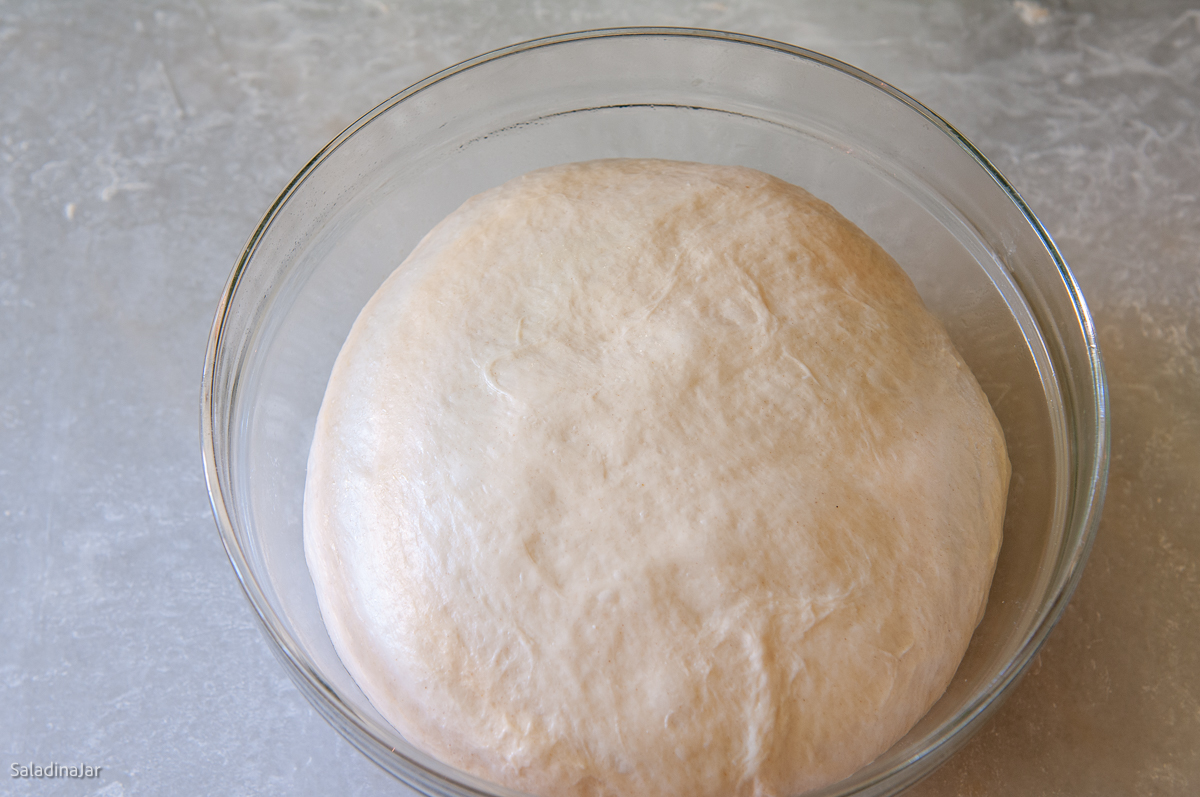
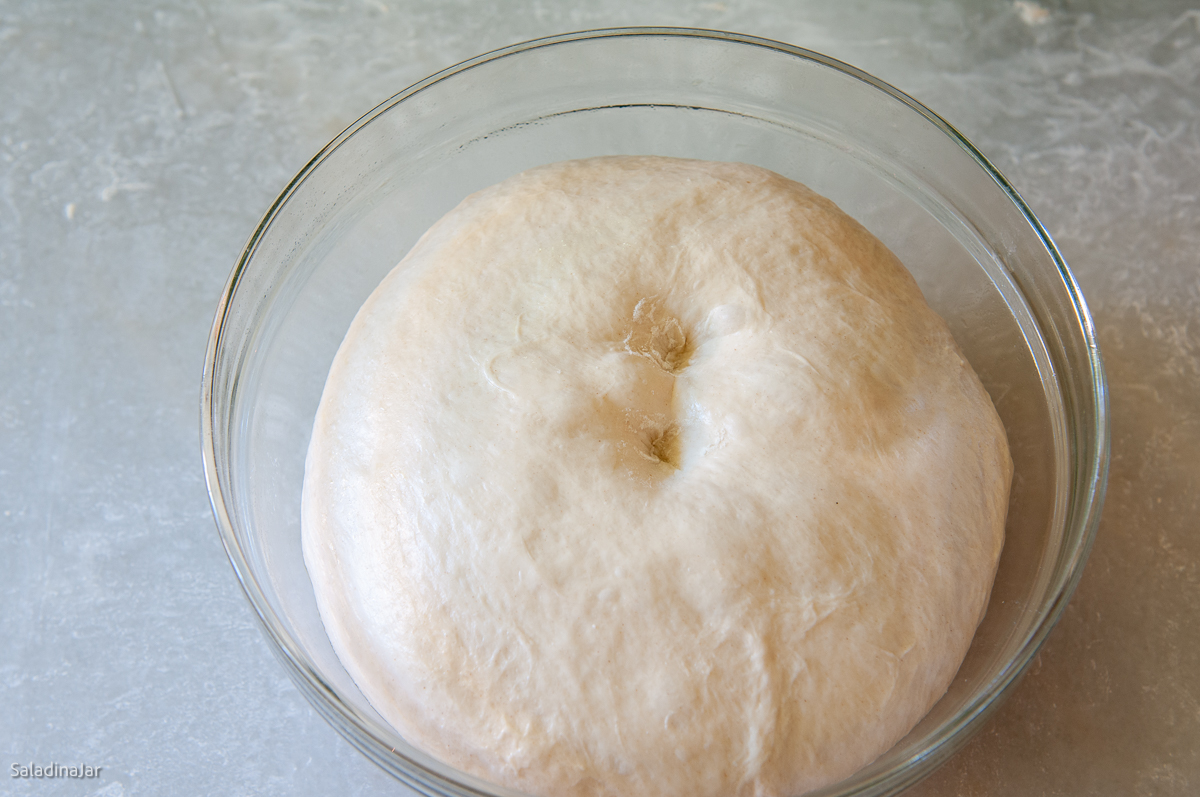
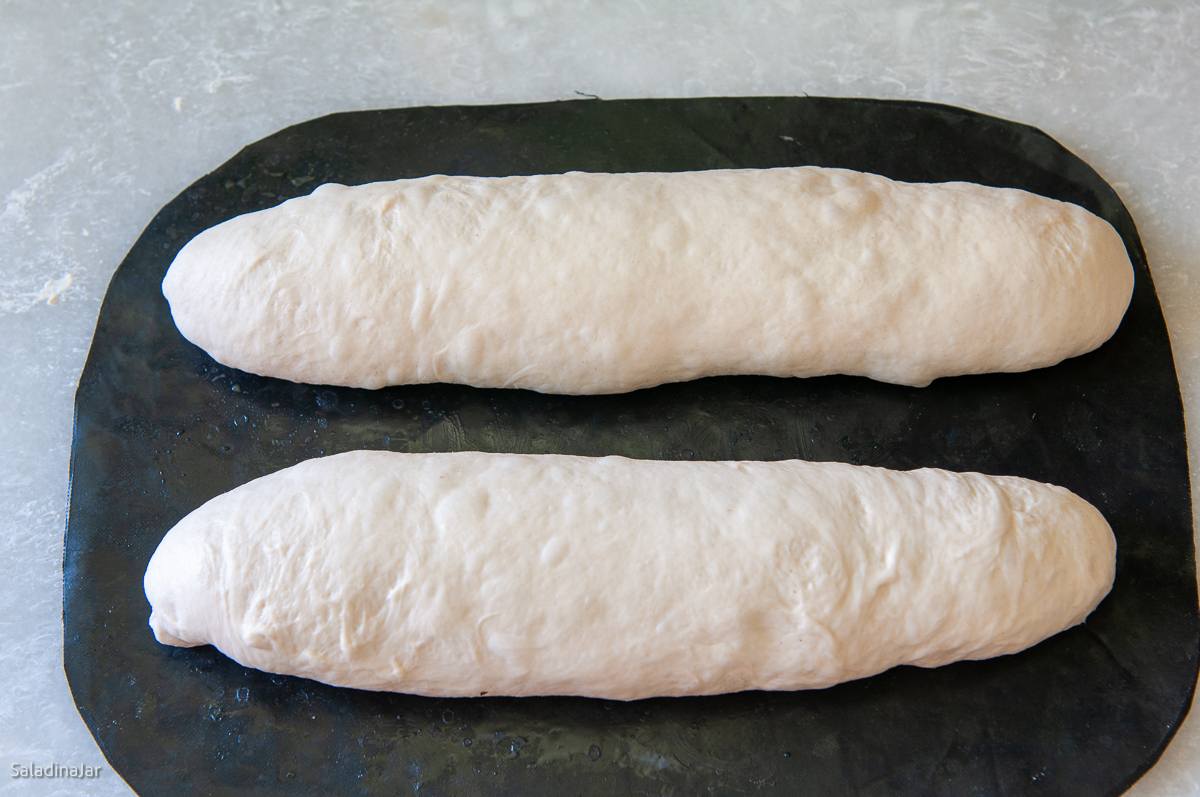
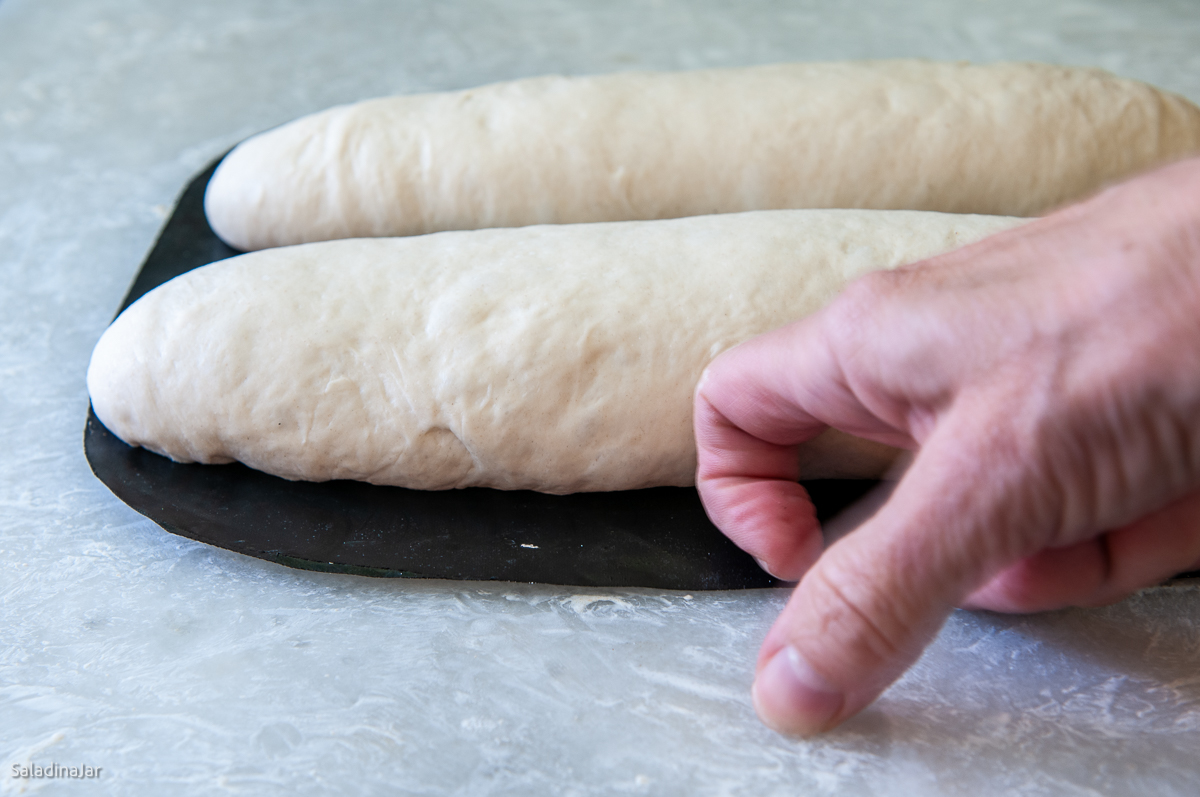
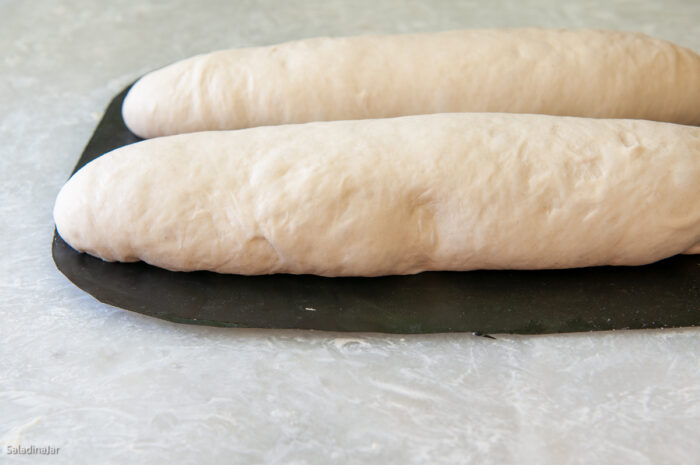
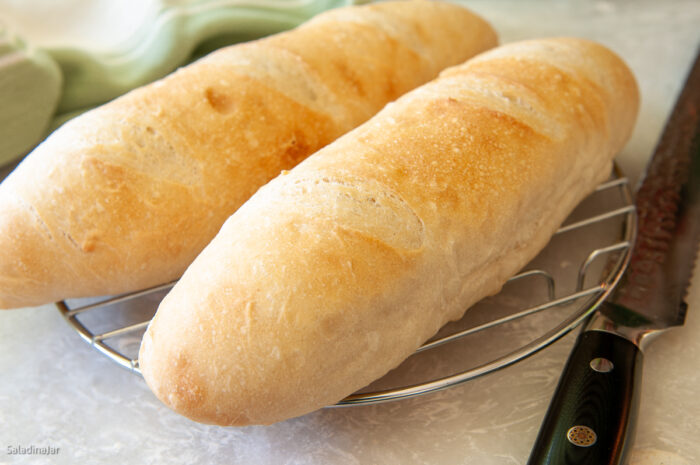
The bread in the picture above is made from this popular French bread recipe. Despite baking this bread at 425˚F, the dough is not brown and crusty like it should be. The bottom is brown, but the sides near the bottom are nearly white, and the top does not look nice. There’s not much caramelization on that crust.
The internal temperature of this bread registered 207˚F when removed from the oven. It wasn’t doughy, and the texture was normal. However, the flavor was not up to the usual standard for this bread. It lacked character and was bland.
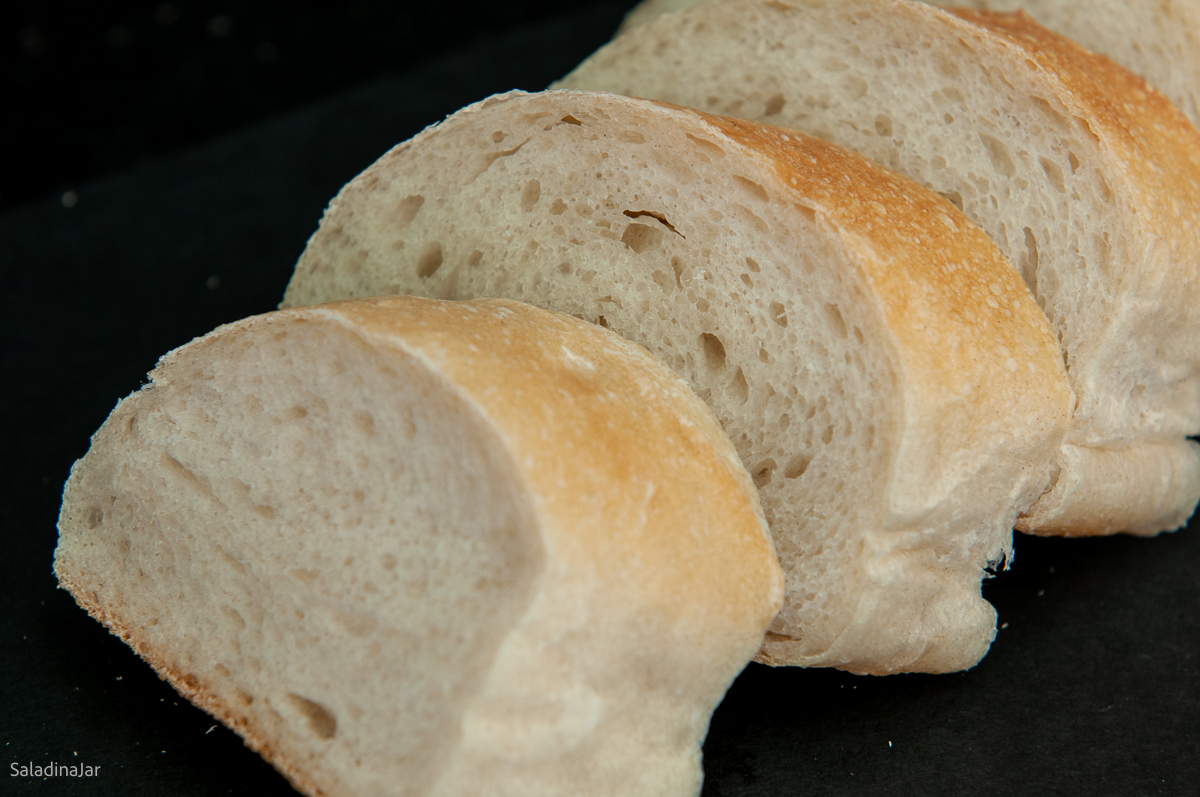
How Do I Prevent Overproofed Dough?
1. Use the DOUGH cycle instead of baking bread inside the machine.
Use the DOUGH cycle to mix the dough, then bake your bread in a conventional oven. If you know me, that’s my solution to most problems with a bread machine.
This is not a set-it-and-forget-it solution. If you suspect one of the above factors, you can watch as the bread rises. There are two ways to do this:
1) Leave the dough in the pan for the entire DOUGH cycle, but monitor the dough. Pull the dough out of the pan if it doubles in size and passes the two-finger test.
This can happen before the DOUGH cycle completes. Always check your dough before the end of the DOUGH cycle during the summertime if you’re having trouble.
2) Remove the dough from the bread machine pan as soon as the kneading action stops and the machine quiets. Place the dough ball into another bowl and cover. This may be helpful if you need a cooler place to let the dough rise.
I have used an ice chest or microwave oven with ice cubes or a frozen freezer pack inside. They both make a good environment if my kitchen is too warm. Remember this solution on Thanksgiving Day when your kitchen is warmer than usual with all that cooking.
2. Adjust the hydration of the dough.
You can adjust by decreasing the liquid slightly or adding more flour. The wetter the dough, the faster it will rise, all other things being equal.
Unfortunately, I can’t be specific about the amounts. See this post about adjusting your dough in a bread machine as it kneads. Every loaf will be different. Experimentation = valuable experience.
3. Reduce the amount of yeast.
Decreasing the yeast will slow down the rise. Start with 1/2 teaspoon less and go from there.
4. Be careful about substitutions if you are a beginning bread maker.
I get many questions from readers who swap out different flour to make their bread more “healthy.” That’s OK, but it helps to understand the different qualities of each flour before you start substituting. For example, rye flour is lower in gluten but may cause your dough to rise faster.
5. Start with cold ingredients when the weather is unusually warm.
All my life, I’ve warmed liquids and eggs before adding them to bread. It turns out I don’t HAVE to. Slow down the rise on a hot day by starting with cooler ingredients. This is also a good way to buy extra time if you need a longer first rise.
Two caveats: Add nothing frozen, like butter, to a bread machine pan. That’s taking the “cold” idea a little too far.
Secondly, this suggestion does not apply if you use the machine to mix, knead, and bake the bread. Cold ingredients will likely confuse the computer in your bread machine(paid link). The timing is based on room-temperature ingredients.
Now you know how to recognize when the dough has proofed enough using the two-finger test. You know why your dough may surprise you and rise faster than expected and what to do about it.
Final thoughts: Have courage and take control of your bread machine. Make it work for you in the best possible way so that your bread turns out beautiful and tasty every time. Get more bread maker tips and secrets here.
If you have questions or suggestions, email me privately for a quick answer: Paula at saladinajar.com. Hope to see you again soon!



Paula Rhodes, owner
As a retired home economist, I created Saladinajar.com to share my belief that you don’t have to be a chef to find joy in creating homemade food worth sharing. Bread machines (used in an unconventional way), homemade yogurt, and quick microwave recipes are my specialty.